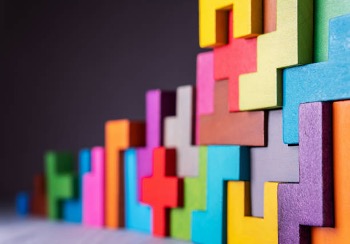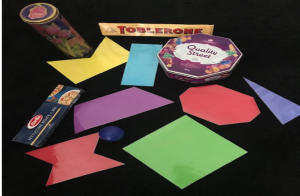Level: Year 2 and Year 3
Author: Anna Bock
Description:
Two dimensional shapes and three dimensional objects have distinguishable characteristics and are named according to their properties. The focus of this activity is to encourage and support students to describe two dimensional shapes and three dimensional objects according to their features or properties. This activity can be repeated many times as the shape or object chosen will be different every time. Experience in describing shapes and objects will see students gain greater confidence in using the language of properties and features.
GUESS MY SHAPE OR OBJECT
Materials: Assortment of two dimensional shapes and three dimensional objects, pencils & paper
Objective: To describe, draw or make two dimensional shapes and three dimensional objects according to their properties/features.
Instructions:
- Find a shape or object.
- Think about how it could be described.
- Fold a piece of paper in half.
- Open up the fold and draw a picture of the shape or object here.
- Close the fold and describe the shape or object, think about it’s properties/features.
- Make a model of the three dimensional object you have chosen.
- Read the description to someone and see if they can guess what your shape or object is.
We want students to:
- Define a two dimensional shape as a shape that has length and width.
- Name the properties of two dimensional shapes
- the number of sides
- the number of corners
- symmetry
- length of sides,
- size of angles
- convexity
- concavity
- Define a three dimensional object as an object that has length, width and height
- Name the properties of three dimensional objects
- faces
- edges
- vertices/corners
- surfaces
Notes for parents: It’s important to encourage your child to use the language of properties when describing shapes and objects rather than focusing on their appearance. Although there are quite a number of properties listed your child will build on their understandings of the various properties gradually. Using the language of two- dimensional shapes and three- dimensional objects rather than 2D or 3D is also important.
This activity covers the following Australian Curriculum-Mathematics Content:
Year 2:
- Describe and draw two-dimensional shapes, with and without digital technologies (ACMMG042)
- Describe the features of three-dimensional objects (ACMMG043)
Year 3:
- Make models of three-dimensional objects and describe key features (ACMMG063)
Resources:
For any questions or queries please contact: choosemaths@amsi.org.au




